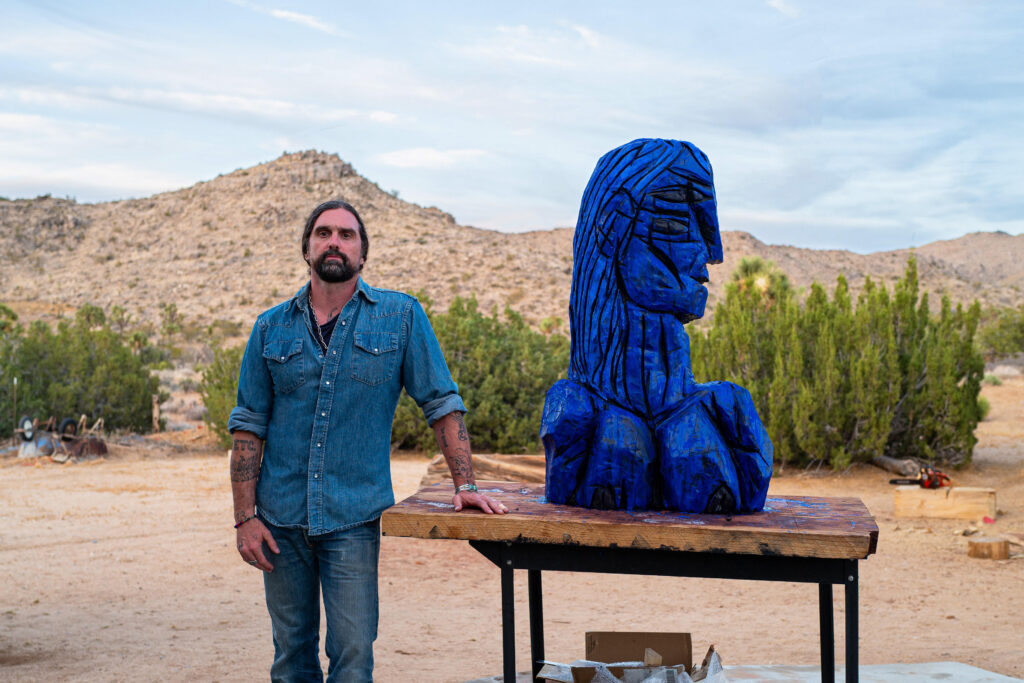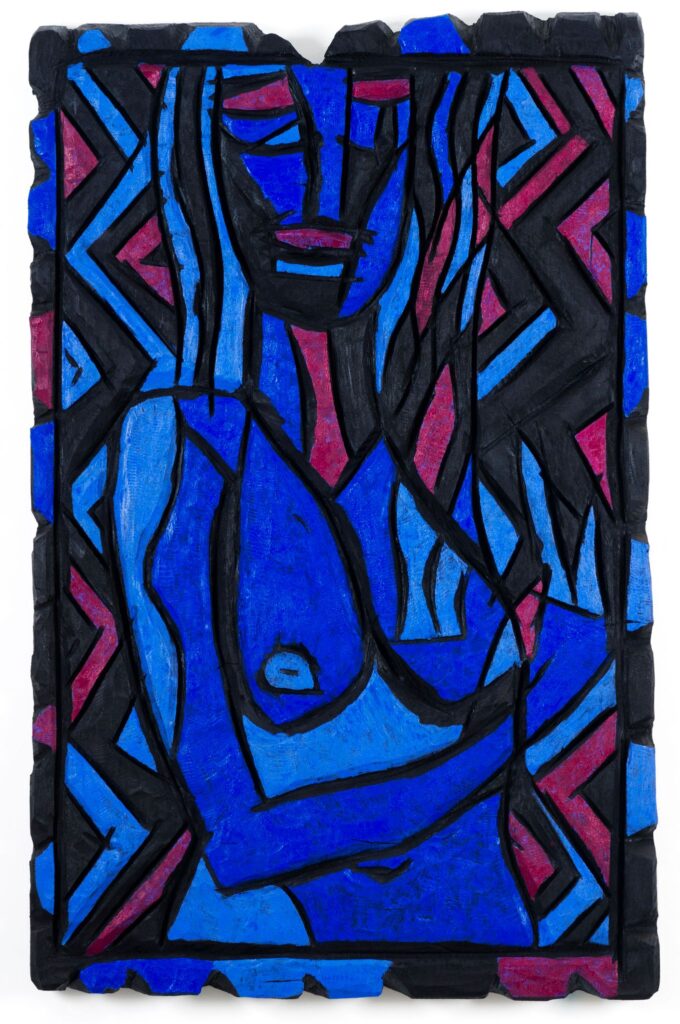by ANNABEL KEENAN

Artist Ryan Schneider, photographed in Joshua Tree by Chase McBride
The Californian high desert has long served as inspiration for artists. The extreme climate and stunning, rugged landscape captivates with its mystery, resembling something otherworldly and mystical while also offering a respite from the stress and bustle of urban life. Artist Ryan Schneider has made this ethereal landscape his home for nearly a decade. He originally came to the desert for a three-month break from New York City where he had been living for 13 years. After a few weeks, he realized he craved nature and moved to Joshua Tree.
The effect of the desert was nearly instant. “When living in New York, my work had a personal narrative to it—it was always about me, my city, my relationships,” Schneider tells Avenue. “When I got to Joshua Tree I very quickly began to disappear from my work. It started to describe something more sensed than seen. The desert had that effect, which is why I believe so many people are drawn to this place. It allows you to disappear and be a fractal of a greater whole.” In the years since, Schneider’s practice has become heavily influenced by the environment, as well as tree spirit mythology, German expressionism, Cubism, and a range of pre-Christian traditions. He combines these influences in vibrantly colored paintings and sculptures made of wood and bronze that toe the line of abstraction and figuration. As we speak, with the expansive desert as a backdrop, Schneider is busy putting the final touches on “Nocturner,” his first solo show with Almine Rech in New York, which opened June 27.

Ryan Schneider’s Nocturner
At the heart of “Nocturner” is a painting of the same name. In it, Schneider has portrayed a stunning, nude female figure in spectacular shades of blue and fuchsia—“night colors,” as he calls them, a departure from the neon hues he’s known for. Painted on carved wood, the figure locks eyes with the viewer in a fleeting, intimate moment. Her long hair blends into the abstract zig-zag pattern of the background, lending a Cubist air to the work. Its nocturnal atmosphere permeates the show as similar “night colors” and contemplative moments unfold.
Nocturner is Schneider’s first “carved painting,” a new development in his practice. Indeed, he only started working with wood five years ago when he was feeling backed into a corner with the traditional figurative and still-life paintings he had been making. “I was in a stagnant place with my work, and I could feel that there was something else I needed to do, but I wasn’t sure what,” he says. “I had always loved the wood sculptures of Georg Baselitz and was turned on by carved wood sculptures in general—whether by Kirchner, or African and Polynesian traditions, it always just grabbed me when I encountered it—it’s always ‘in the ether.’”

Ryan Schneider’s Hunter/Seeker
Armed with a small chainsaw, he started to experiment with wood carving. “It was really awkward, and relatively dangerous,” Schneider jokes. He often uses Torrey pine, which is softer and easier to carve into, and creates upright, totemic sculptures inspired by the primal essence of the desert. In the beginning, being new to the material, he didn’t have a frame of reference for how to use it or how physically demanding the process would be. Trial and error, Schneider says, have been his biggest teachers.
Shortly after his first foray into wood carving, Schneider understood something important was happening. “I knew instinctively that this is what I was supposed to be doing,” he explains. “I kept at it; imagining no one would understand or want to show my sculptures, but not really caring because I felt a level of satisfaction in my work I hadn’t known before.” Wood quickly became a crucial part of his practice, and he stopped making traditional paintings two years ago. Now, he spends much of his day moving heavy logs and getting covered in sawdust and gasoline.
After years of making wood sculptures, Schneider’s latest innovation with the material–carved paintings–marks a new chapter that blurs the line between painting and sculpture. He began experimenting with carved paintings at the beginning of winter. “I connected with some woodworkers up north and they brought me slabs of young sequoia,” he explains. He cut these into smaller rectangles and hung them in his outdoor studio. As he often does, Schneider spent time with the rectangles and let the material guide the creative process. “One day, while working on another sculpture, I turned to one of the rectangles and could see a female figure in it,” he says. He then drew a figure with his chainsaw, thus creating Nocturner.
Joining this in the show are additional carved paintings and examples of Schneider’s works in bronze, a medium he first worked with in 2022. To make these, he begins by creating a sculpture out of wood and then works with a foundry to make a cast. The result reveals marks from the chainsaw and knots and wood grain inherent in the material.
Together in “Nocturner,” they create what Schneider calls a meditative place. “Taking into account the usual hot chaos of a New York City summer, I hope viewers will enter this underworld and cool off, slow down, let their eyes adjust, as when entering a cave,” he says. “I hope people take the invitation to slow down.”

Artist Ryan Schneider

